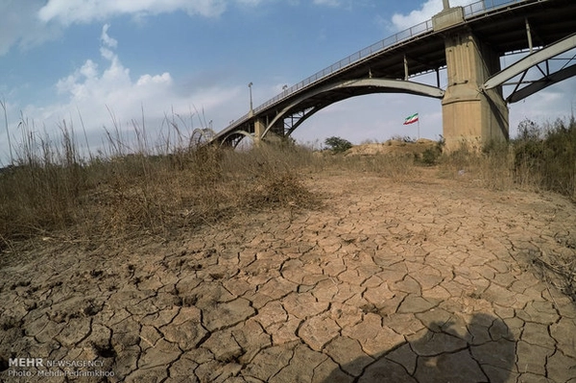Iran's only navigable river at risk of drought, experts warn

The Karun River, the longest and only navigable river in Iran, is under severe strain from drought, reduced flow, chemical pollution, and wetland degradation, according to experts.

The Karun River, the longest and only navigable river in Iran, is under severe strain from drought, reduced flow, chemical pollution, and wetland degradation, according to experts.
The river, a key source of hydropower through dams such as Karun 3, Karun 4, and Gotvand, has seen its water levels fall sharply.
Experts have long criticized Iran’s dam-building policy as unsustainable, driven by poor governance and short-term political interests rather than scientific planning.
“The most significant factors in the Karun crisis are dam construction projects like Karun and Gotvand, inter-basin water transfers to provinces such as Isfahan and Yazd, and the cultivation of water-intensive crops like sugarcane and rice in Khuzestan,” Ali Arvahi, a wetland ecosystem management expert, told the news outlet Khabar Online on Thursday.
Karun 3 and Gotvand dams are located in Khuzestan Province, while Karun 4 is in Chaharmahal and Bakhtiari.
“In recent years, the Karun’s flow, once 500 to 600 cubic meters per second, has fallen to below 100 cubic meters per second in some months,” Arvahi noted.
Water crisis, air pollution
Khuzestan, a major hub for sugarcane cultivation, has more than 80,000 hectares under the crop despite an ongoing water crisis.
“Sugarcane farming in Khuzestan’s semi-arid climate is neither sustainable nor economically viable in the long run. It is among the biggest planning mistakes in the Karun basin, putting extreme pressure on limited water resources,” Arvahi said.
The province also suffers some of the highest air pollution levels in Iran.
On Thursday, Iran’s Air Quality Monitoring System reported unhealthy (red-level) conditions in multiple cities of Khuzestan: Ahvaz (AQI 168), Hendijan (167), Behbahan (163), Ramhormoz (156), and Andimeshk and Omidiyeh (155).
The safe (green) range on the Air Quality Index (AQI) is 0–50, while anything above 100 is considered unhealthy, especially for sensitive groups.
Broader climate crisis
Amid an ongoing economic crisis, Iran is currently grappling with multiple national challenges including severe water shortages and widespread power outages which are also hampering the country's agricultural industry.
“The situation we are witnessing now is complete water bankruptcy across most of the country, resulting from mismanagement. When they could have prevented these issues, they paid no attention,” Mansour Sohrabi, an ecologist and environmental expert in Cologne, told Iran International.
Over the past year, Iran has recorded a 1.5°C rise in average temperatures and a 45% decline in rainfall, contributing to accelerating desertification nationwide.
The Karun River is the longest in Iran, stretching 950 kilometers (590 miles) from the Zagros Mountains through Khuzestan Province to the Persian Gulf.